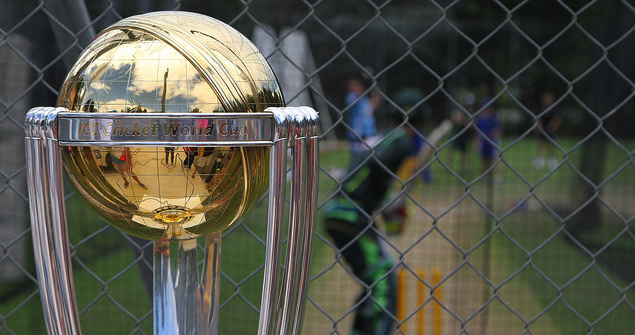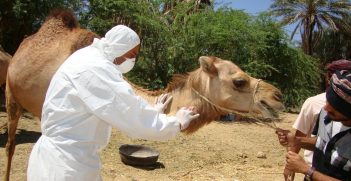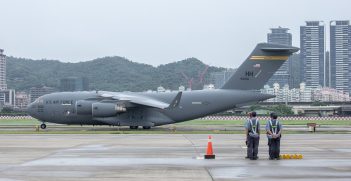Sport – A Tool for International Diplomacy

Australian sport has had a major international boost this year, with historic wins in the Asia Cup and the Cricket World Cup. The relationships developed in corporate boxes and in the bays of the MCG can plant the seeds of strong international relationships, but a more formal, well funded approach from the Government would establish our sporting heroes as ‘sports diplomats”.
Australia boasts a spectacular level of sporting achievement. We have excelled at the Olympic Games throughout its history. We have won the Rugby World Cup twice and the Cricket World Cup five times. We are dominant in netball, hockey, water polo, surfing and swimming. It is a well-worn adage that sport is religion in this country and yet Australia lags behind the rest of the world when it comes to sports diplomacy.
What is Sports Diplomacy?
Sports diplomacy can be thought of in two ways. First, it is the intentional appropriation of sport by government as a tool for conducting international diplomacy. Secondly, it is the broader webs of interaction that build up around international sporting events between government, NGOs, business, media, civil society and, of course, teams and sporting bodies themselves.
Sport can be used as a tool to project a state’s image to the rest of the world. It can build stronger relationships with other states, from the bottom up.
It has been co-opted in the past to test diplomatic waters and evaluate the possibility of international cooperation, as in the famous ‘ping-pong diplomacy’ that helped open up US-China relations in the 1970s.
Sport has been used to send political messages. Many countries refused to face the South African national rugby team during the 1970s and 1980s in a show of condemnation towards the apartheid regime.
International sporting ‘mega-events’ like the Olympic Games put a country in the spotlight and showcase all it has to offer. Australia has been successful in this kind of “place branding”, regularly hosting large-scale, high-profile sporting events in major cities. In 2015 alone Australia will host the Netball World Cup in August, and the victorious Cricket World Cup and the Asia Cup attracted thousands of international visitors. Thousands more descend on Melbourne for the annual Australian Open Grand Slam event.
Australia has little trouble attracting the world to spectacular sporting events, but this is different to active government-led sports diplomacy as a tool of international engagement.
Australia’s Sports Diplomacy Program
The Department of Foreign Affairs and Trade (DFAT) places sports diplomacy in a sub-section of its public diplomacy program. In its 2014-2016 Public Diplomacy Strategy, sports diplomacy is listed as one public diplomacy approach among many. Despite being praised as “one of Australia’s greatest cultural assets”, sport only earns a brief mention:
“DFAT will develop new initiatives to promote Australia’s sporting assets and expertise as a basis for building understanding of our culture and values, and strengthening links with institutions and communities in the region.”
This is all a little vague for something claimed to be such a large part of Australian culture. It is perhaps understandable that so little focus should be placed upon sport given the minimal funding allocated to public diplomacy. The program was assigned approximately $29 million for 2014-15. However, $13.5 million of this is earmarked for Tourism Australia and $10.5 million for the Australia Network. Very little then remains for the rest of the public diplomacy program and even less for sports diplomacy.
The issue is symptomatic of the much broader problem of DFAT underfunding. Australia’s foreign office has been functioning on an increasingly reduced budget in recent years with many overseas posts closed due to a lack of resources.
Dr Stuart Murray, an expert on sports diplomacy in Australia, is highly critical of Australia’s current efforts in this area. He stresses the need for increased DFAT funding and also recommends that sports diplomacy be considered a distinct foreign policy area in its own right. The crux of the issue is a “disconnect between the reality of sport in Australia and its representation and utility as a diplomatic tool”. Increased funding would help, but a conceptual shift is also required. Sports diplomacy must be acknowledged as a legitimate and effective tool in international relations, not simply an interesting side-project. As Murray contends, this form of ‘new diplomacy’ could provide a dramatic boost to Australia’s foreign relations with its immediate neighbours in Southeast Asia and the Pacific.
Diplomacy to Match On-Field Success
Sports diplomacy is a perfect foreign policy instrument for our aim of promoting Australia to the world. Sport represents a starting point in addressing Asian engagement in an Asian Century. Grassroots, bottom-up approaches to international engagement are just as important in relationship building as top-down meetings and initiatives. While relations between governments rise and fall with the coming and going of leaders, people-to-people links and public diplomacy programs can withstand these shocks.
Australia needs to increase its efforts in sports diplomacy. Let us move beyond mega-events – which we already do so well – and strengthen government-run initiatives to use sport as a tool to develop soft power, in our region and beyond.
Sebastian McLellan studies a Master of International Relations at the University of Melbourne and is a former research intern at the AIIA National Office. He can be reached at sebastian.mclellan62@gmail.com. This article can be republished with attribution under a Creative Commons Licence.





